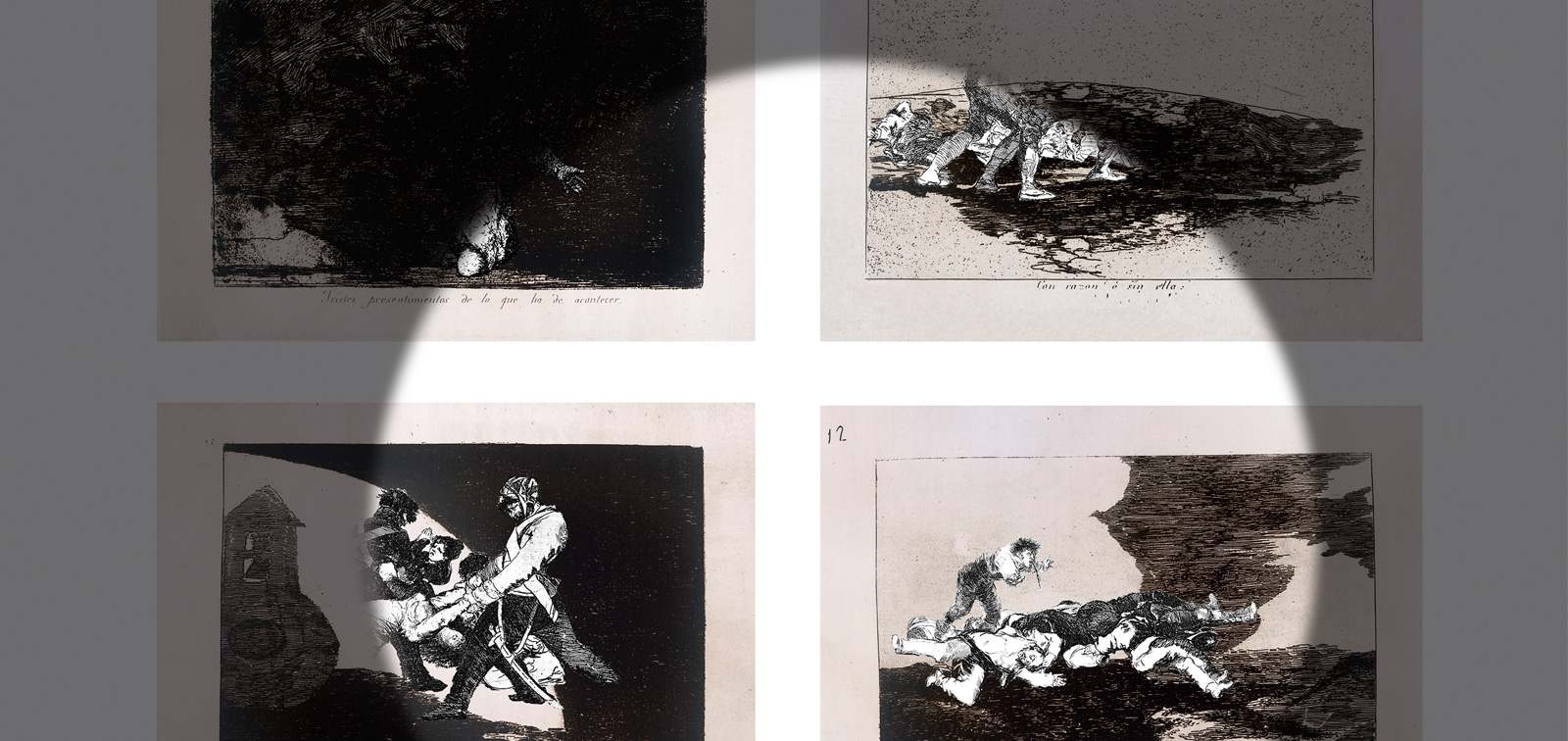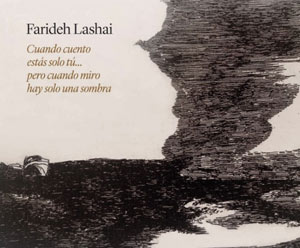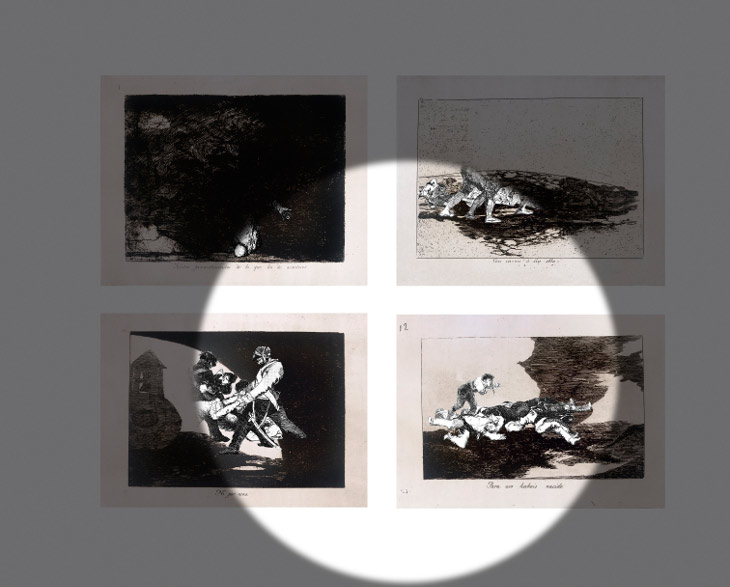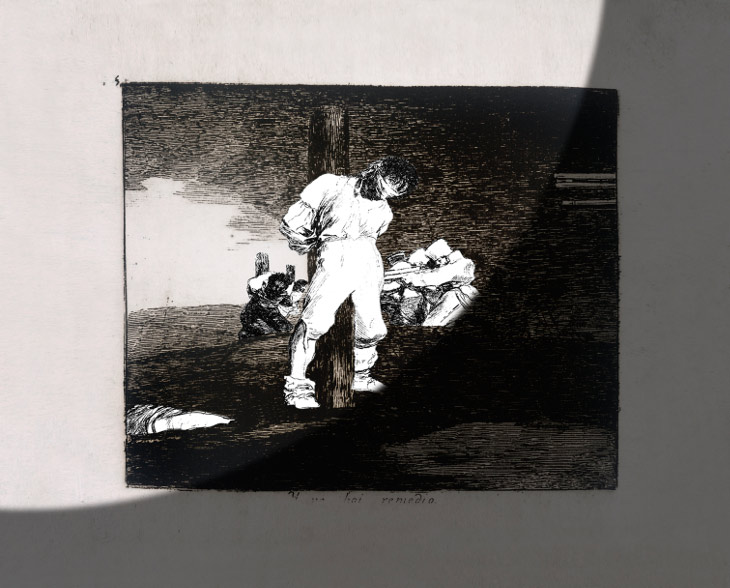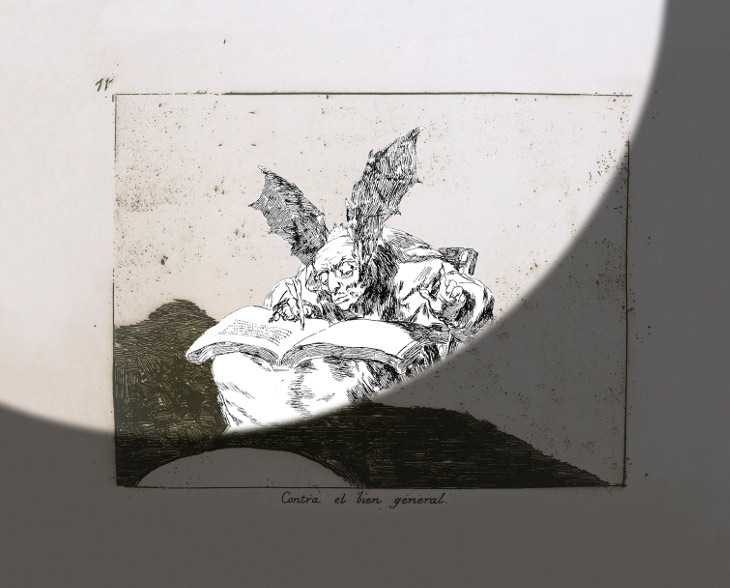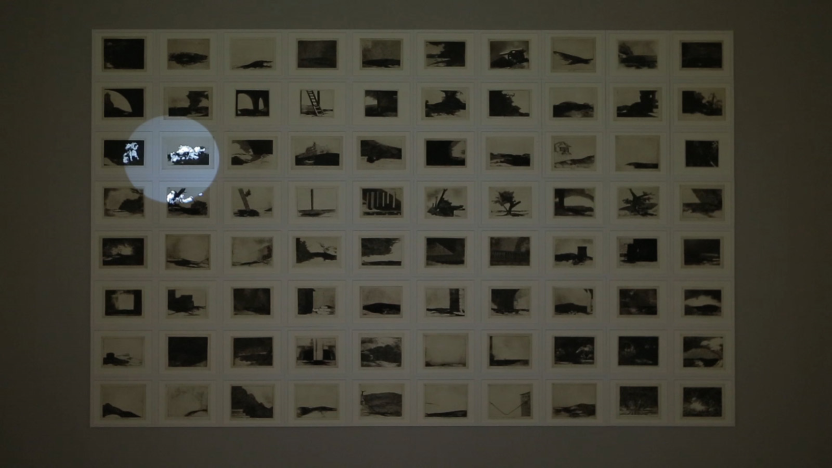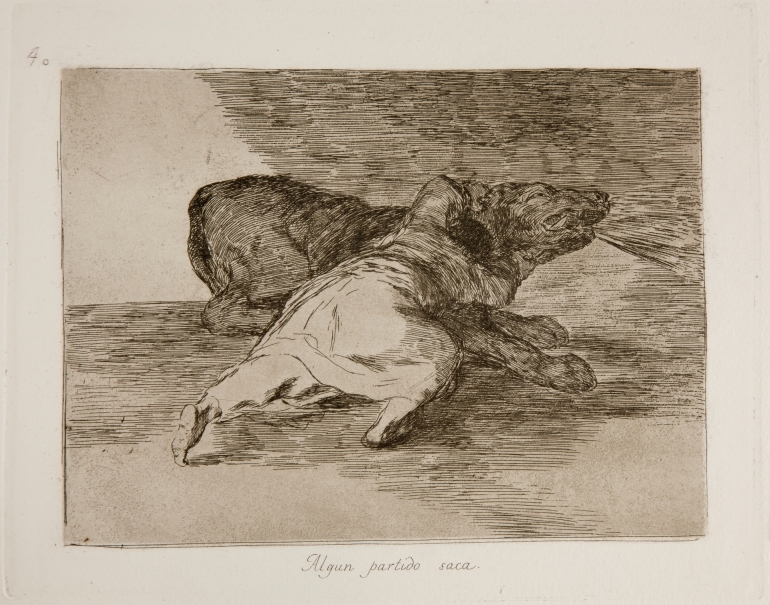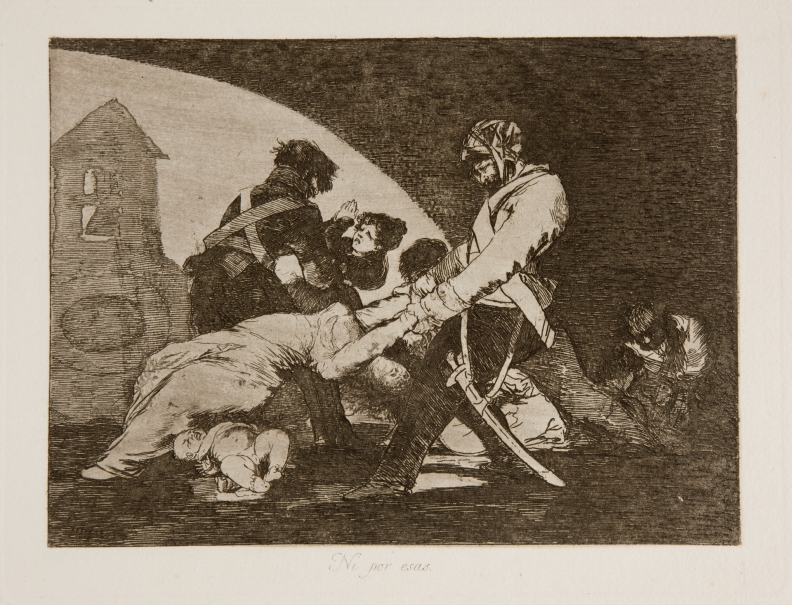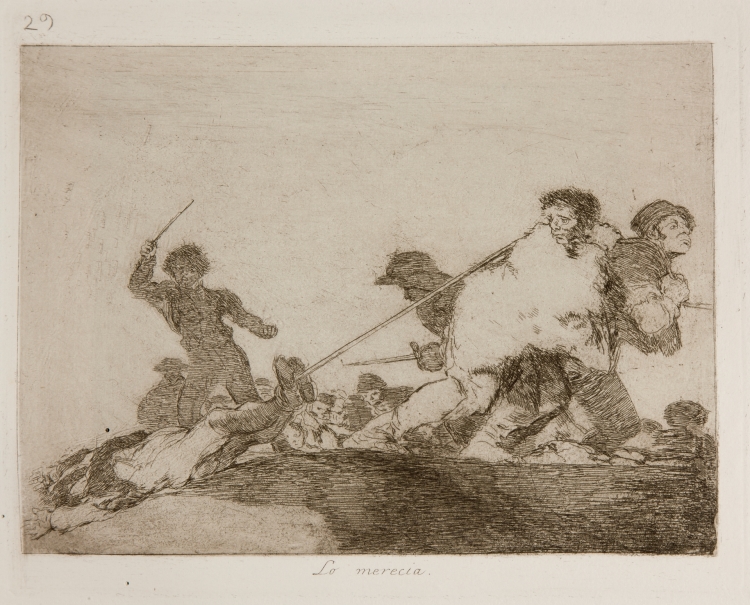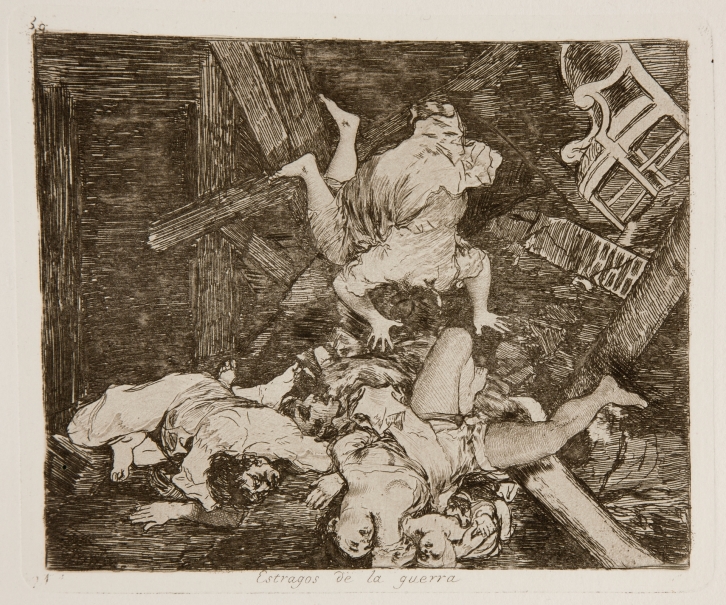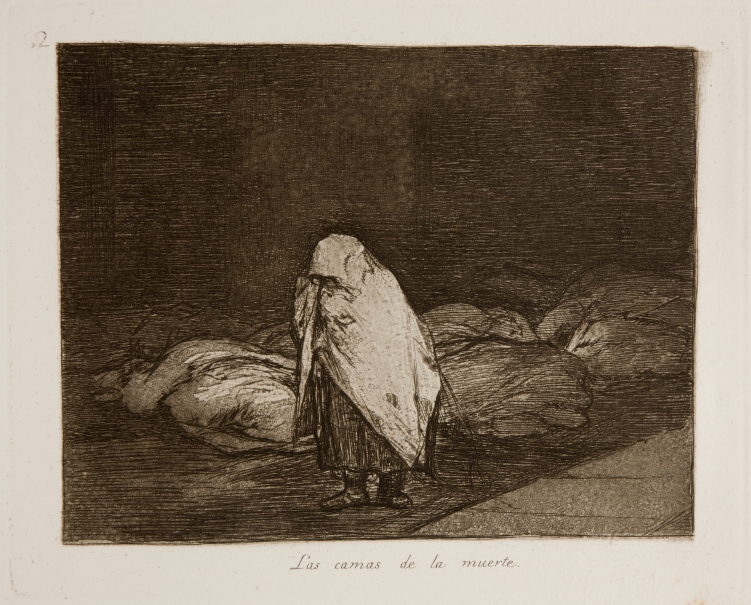This is a video installation which takes up Goya’s message and reinterprets it from the viewpoint of the present. It is inspired by his print series The Disasters of War, a universal symbol of suffering caused by human beings, of injustice and of the senseless nature of war. Farideh’s work encourages viewers to focus on the harsh, disturbing images in these prints and to feel involved in them.
In order to achieve this the artist carefully manipulated each print, extracting the scenes and filling in the gaps left by the figures. The backgrounds thus become empty settings which she arranged in a rectangle comprising eight superimposed lines of ten photo-intaglio prints each. The previously digitally animated figures are projected over each of these backdrops by a small spotlight that passes across the prints to the rhythm of Chopin Nocturne 21 in C minor. When the spotlight coincides with a specific backdrop it projects the corresponding scene on it, which is animated for a brief moment before disappearing again into the shadows as the spotlight continues on its random path, illuminating new “Disasters”.
Farideh’s account is a fragmentary one, based on the sensations produced by seeing the scenes randomly illuminated. The result is to make the viewer focus both on the backgrounds and on what is happening. A work of apparently simple appearance but of enormous complexity, it takes its reference point from Goya’s series, which Farideh deconstructed and reconstructed in order to reinterpret a contemporary reality.
The work’s carefully devised composition, which juxtaposes the horror of the scenes, the lyricism of the rhythm of the light and the soft, romantic music, has an open-ended, poetic title which emphasises its meaning, inspired by lines from T. S. Eliot’s poem The Wasteland (1922).
When I look… can be related to the body of visual work created by Farideh Lashai in the last seven years of her life, when she was influenced by the literary language of the autobiography she wrote as a mature artist. This body of work takes the form of video installations in which painting, poetry, theatre, film, animation and sound combine in a natural manner, expanding their expressive powers and giving rise to a distinctive language of juxtapositions of layers of meaning and dialogues with creative figures from all historical periods.
For this project, which is part of the PHotoEspaña festival, the Museo del Prado has collaborated with the British Museum, which has generously loaned this work and will also be making it the principal focus of an exhibition in London in 2018. The Prado has also counted on the collaboration of the Fine Arts Museum in Ghent, which presented Farideh’s installation between February and early May this year using an approach that differed from the present one based on a dialogue with Goya.

